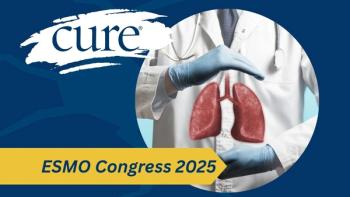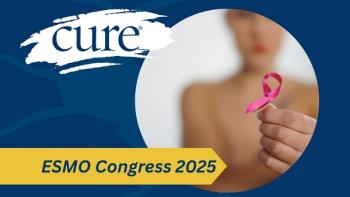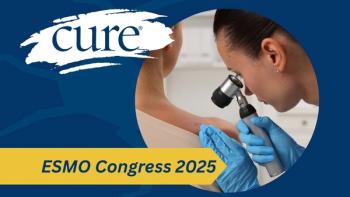
Caring for Patients with Sarcoma is a Team Effort, Expert Says
One expert from the University of Colorado Cancer Center explains the multidisciplinary aspect of sarcoma care to maximize patients’ functioning.
Treating patients with soft tissue sarcoma or bone sarcoma is a “team sport,” as one expert explained in an interview with CURE®.
Dr. Steven Thorpe is the chief of the musculoskeletal oncology program at the CU School of Medicine’s Department of Orthopedics. Thorpe, part of the team at the University of Colorado Cancer Center and Children’s Hospital Colorado, explained the multidisciplinary aspect of sarcoma care.
“Say we have a soft tissue sarcoma or bone sarcoma in the extremity. We think, number one, as an oncology surgeon, how can we help contribute to curing the patient's disease? … But second, we obviously want patients to have a great functional outcome,” Thorpe said. “… And so, when I think about that, we obviously — with modern multidisciplinary treatments like radiation therapy, chemotherapy, other targeted therapies — think about how can we as a group, as a team, because it's really a team sport in treating these patients, how can we achieve that goal oncologically, and help cure them and keep the disease from coming back? But, at the same time, spare as much normal tissue as we can so that as we get through this, that they have as great a function as we can give them?”
LEARN MORE:
An orthopedic surgical oncologist who has been practicing since 2016, Thorpe, according to the University of Colorado, has experience treating pediatric and adult patients with bone and soft tissue sarcomas, and his areas of particular interest include pediatric limb salvage procedures and surgery.
Limb-sparing surgery, according to the National Cancer Institute, is surgery to remove a tumor in the arm or leg without removing the whole limb.
“In bone sarcomas, there are multiple different surgical options to reconstruct after we take a bone sarcoma or portion of the bone that's affected out,” Thorpe said. “And we can reconstruct that with traditional metal implants certainly, allograft [transplant], bone grafts as well, as well as in today's world there's the advances of technology and 3D printing.
“And so, we can have some unique applications to help restore their skeletal system and their function. And then even in the soft tissue sarcoma realm we try to, with radiation therapy and other systemic treatment, save as much as we can, save critical structures and take a team approach to save their affected limb, and not only save it, but also maximize the function that we can after treatment.”
Thorpe explained the importance of working to maximize function after treatment for pediatric patients.
“You have to weigh the now and what they're going through now — which sometimes is a very difficult treatment course during their current times, and sometimes that's a year of their life — but we have to tailor that treatment also in helping them get to an understanding that we're thinking not only about now and getting through this, but what does that look like in 10, 20 years?” Thorpe said. “What does it look like as they go through college and whatever their aspirations and pursuits afterward is? I usually tell them, when I meet with a patient in that age range and with their parents and everybody, that my goal is to not only see them through this but excited to see what the future looks like for them as they go through those different life stages and tailor treatment based on even at that time. [Also hearing] what their athletic goals are or function they see and also helping them think about [how] what decisions we make now impact what they could be able to do in the future.”
And the team approach, Thorpe noted, is crucial.
“[Providers] rely on each other to form a multidisciplinary group, and especially taking care of patients that have rare tumors like sarcoma, it's essential, because there are so many different subtypes of bone and soft tissue sarcoma, up to about 100,” he said. “And so, we need to think about each one of those as a different entity.”
For more news on cancer updates, research and education, don’t forget to





